Anthocyanin Structure and pH Dependent Extraction Characteristics from Blueberries (Vaccinium corymbosum) and Chokeberries (Aronia melanocarpa) in Subcritical Water State
Abstract
:1. Introduction
2. Materials and Methods
2.1. Materials
2.2. Chemicals and Reagents
2.3. Extraction Methods
2.4. Determination of Total Anthocyanin Contents
2.5. High-Performance Liquid Chromatography (HPLC) and Mass Spectrometry (MS)
2.6. Total Flavonoid Content
2.7. Antioxidant Activity
2.8. Scanning Electron Microscopy
2.9. Data Analysis
3. Results and Discussion
3.1. Results from pH Differential Method and High-Performance Liquid Chromatography (HPLC) Analysis
3.2. Optimal Conditions of Subcritical-Water Extraction (SWE) from Blueberry and Chokeberry
3.3. Factors Affecting the Optimum Subcritical-Water Extraction (SWE) Condition for Anthocyanins
3.4. Effect of Extraction pH
3.5. Effect of Flavonoids Content and Antioxidant Activity
4. Conclusions
Supplementary Materials
Author Contributions
Funding
Institutional Review Board Statement
Informed Consent Statement
Data Availability Statement
Conflicts of Interest
References
- Denev, P.; Ciz, M.; Kratchanova, M.; Blazheva, D. Black chokeberry (Aronia melanocarpa) polyphenols reveal different antioxidant, antimicrobial and neutrophilmodulating activities. Food Chem. 2019, 284, 108–117. [Google Scholar] [CrossRef]
- Heinonen, I.M.; Meyer, A.S.; Frankel, E.N. Antioxidant activity of berry phenolics on human low-density lipoprotein and liposome ion. J. Agric. Food Chem. 1998, 46, 4107–4112. [Google Scholar] [CrossRef]
- Jennings, A.; Welch, A.A.; Fairweather-Tait, S.J.; Kay, C.; Minihane, A.M.; Chowienczyk, P.; Jiang, B.; Cecelja, M.; Spector, T.; Macgregor, A.; et al. Higher anthocyanin intake is associated with lower arterial stiffness and central blood pressure in women. Am. J. Clin. Nutr. 2012, 96, 781–788. [Google Scholar] [CrossRef] [Green Version]
- Wang, S.Y.; Lin, H. Antioxidant activity in fruits and leaves of blackberry, raspberry, and strawberry is affected by cultivar and maturity. J. Agric. Food Chem. 2000, 48, 140–146. [Google Scholar] [CrossRef] [PubMed]
- Ananga, A.; Georgiev, V.; Ochieng, J.; Phills, B.; Tsolova, V. Production of anthocyanins in grape cell cultures: A potential source of raw material for pharmaceutical, food, and cosmetic industries. In The Mediterranean Genetic Code-Grapevine and Olive; Intechopen: London, UK, 2013; Chapter 11; pp. 247–287. [Google Scholar]
- Laleh, G.H.; Frydoonfar, H.; Heidary, R.; Jameei, R.; Zare, S. The effect of light, temperature, pH and species on stability of anthocyanin pigments in four Berberis species. Pakistan J. Nutr. 2006, 5, 90–92. [Google Scholar]
- Aliaño-González, M.J.; Jarillo, J.A.; Carrera, C.; Ferreiro-González, M.; Álvarez, J.Á.; Palma, M.; Ayuso, J.; Barbero, G.F.; Espada-Bellido, E. Optimization of a novel method based on ultrasound-assisted extraction for the quantification of anthocyanins and total phenolic compounds in blueberry samples (Vaccinium corymbosum L.). Foods 2020, 9, 1763. [Google Scholar]
- Patras, A.; Brunton, N.P.; O’Donnell, C.; Tiwari, B.K. Effect of thermal processing on anthocyanin stability in foods; mechanisms and kinetics of degradation. Trends Food Sci. Technol. 2010, 21, 3–11. [Google Scholar] [CrossRef]
- Lopes, T.J.; Yaginuma, S.R.; Quadri, M.G.N.; Quadri, M.B. Evaluation of red cabbage anthocyanins after partial purification on clay. Braz. Arch. Biol. Technol. 2011, 54, 1349–1356. [Google Scholar] [CrossRef] [Green Version]
- Ibañez, E.; Kubátová, A.; Señoráns, F.J.; Cavero, S.; Reglero, G.; Hawthorne, S.B. Subcritical water extraction of antioxidant compounds from rosemary plants. J. Agric. Food Chem. 2003, 51, 375–382. [Google Scholar] [CrossRef]
- Ko, M.J.; Cheigh, C.I.; Cho, S.W.; Chung, M.S. Subcritical water extraction of flavonol quercetin from onion skin. J. Food Eng. 2011, 102, 327–333. [Google Scholar] [CrossRef]
- Ju, Z.; Howard, L.R. Subcritical water and sulfured water extraction of anthocyanins and other phenolics from dried red grape skin. J. Food Sci. 2005, 70, 270–276. [Google Scholar] [CrossRef]
- Monrad, J.K.; Howard, L.R.; King, J.W.; Srinivas, K.; Mauromoustakos, A. Subcritical solvent extraction of anthocyanins from dried red grape pomace. J. Agric. Food Chem. 2010, 58, 2862–2868. [Google Scholar] [CrossRef]
- Poiana, M.A.; Moigradean, D.; Raba, D.; Alda, L.M.; Popa, M. The effect of long-term frozen storage on the nutraceutical compounds, antioxidant properties and color indices of different kinds of berries. J. Food Agric. Environ. 2010, 8, 54–58. [Google Scholar]
- Weber, F.; Larsen, L.R. Influence of fruit juice processing on anthocyanin stability. Food Res. Int. 2017, 100, 354–365. [Google Scholar] [CrossRef] [PubMed]
- Tonon, R.V.; Brabet, C.; Hubinger, M.D. Anthocyanin stability and antioxidant activity of spray-dried açai (Euterpe oleracea Mart.) juice produced with different carrier agents. Food Res. Int. 2010, 43, 907–914. [Google Scholar] [CrossRef]
- Lee, J.; Rennaker, C.; Wrolstad, R.E. Correlation of two anthocyanin quantification methods: HPLC and spectrophotometric methods. Food Chem. 2008, 110, 782–786. [Google Scholar] [CrossRef]
- Kalt, W.; McDonald, J.E.; Ricker, R.D.; Lu, X. Anthocyanin content and profile within and among blueberry species. Can. J. Plant Sci. 1999, 79, 617–623. [Google Scholar] [CrossRef]
- Chandra, A.; Rana, J.; Li, Y. Separation, identification, quantification, and method validation of anthocyanins in botanical supplement raw materials by HPLC and HPLC-MS. J. Agric. Food Chem. 2001, 49, 3515–3521. [Google Scholar] [CrossRef] [PubMed]
- Cheigh, C.I.; Yoo, S.Y.; Ko, M.J.; Chang, P.S.; Chung, M.S. Extraction characteristics of subcritical water depending on the number of hydroxyl group in flavonols. Food Chem. 2015, 168, 21–26. [Google Scholar] [CrossRef]
- Ko, M.J.; Cheigh, C.I.; Chung, M.S. Relationship analysis between flavonoids structure and subcritical water extraction (SWE). Food Chem. 2014, 143, 147–155. [Google Scholar] [CrossRef]
- Wang, L.; Weller, C.L. Recent advances in extraction of nutraceuticals from plants. Trends Food Sci. Technol. 2006, 17, 300–312. [Google Scholar] [CrossRef]
- Kırca, A.; Özkan, M.; Cemeroğlu, B. Effects of temperature, solid content and pH on the stability of black carrot anthocyanins. Food Chem. 2007, 101, 212–218. [Google Scholar] [CrossRef]
- Fossen, T.; Cabrita, L.; Andersen, O.M. Colour and stability of pure anthocyanins influenced by pH including the alkaline region. Food Chem. 1998, 63, 435–440. [Google Scholar] [CrossRef]
- Plaza, M.; Turner, C. Pressurized hot water extraction of bioactives. TrAC Trends Anal. Chem. 2015, 71, 39–54. [Google Scholar] [CrossRef] [Green Version]
- D’Alessandro, L.G.; Kriaa, K.; Nikov, I.; Dimitrov, K. Ultrasound assisted extraction of polyphenols from black chokeberry. Sep. Purif. Technol. 2012, 93, 42–47. [Google Scholar] [CrossRef]
- Harbourne, N.; Jacquier, J.C.; O’Riordan, D. Optimisation of the aqueous extraction conditions of phenols from meadowsweet (Filipendula ulmaria L.) for incorporation into beverages. Food Chem. 2009, 116, 722–727. [Google Scholar] [CrossRef]
- Oszmianski, J.; Wojdylo, A. Aronia melanocarpa phenolics and their antioxidant activity. Eur. Food Res. Technol. 2005, 221, 809–813. [Google Scholar] [CrossRef]
- Sun, Y.; Zhang, Y.; Xu, W.; Zheng, X. Analysis of the anthocyanin degradation in blue honeysuckle berry under microwave assisted foam-mat drying. Foods 2020, 9, 397. [Google Scholar] [CrossRef] [Green Version]
- Alvarez-Suarez, J.M.; Cuadrado, C.; Redondo, I.B.; Giampieri, F.; González-Paramás, A.M.; Santos-Buelga, C. Novel approaches in anthocyanin research—Plant fortification and bioavailability issues. Trends Food Sci. Technol. 2021, 29. [Google Scholar] [CrossRef]
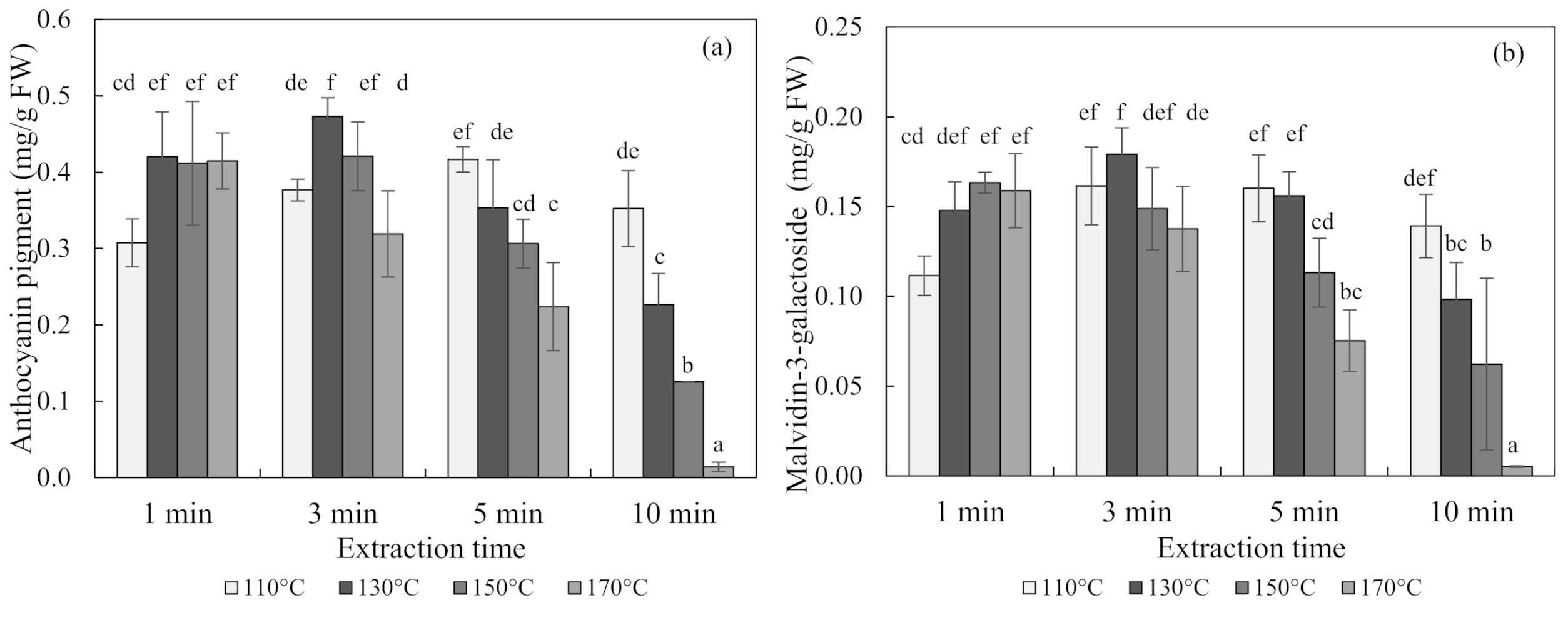

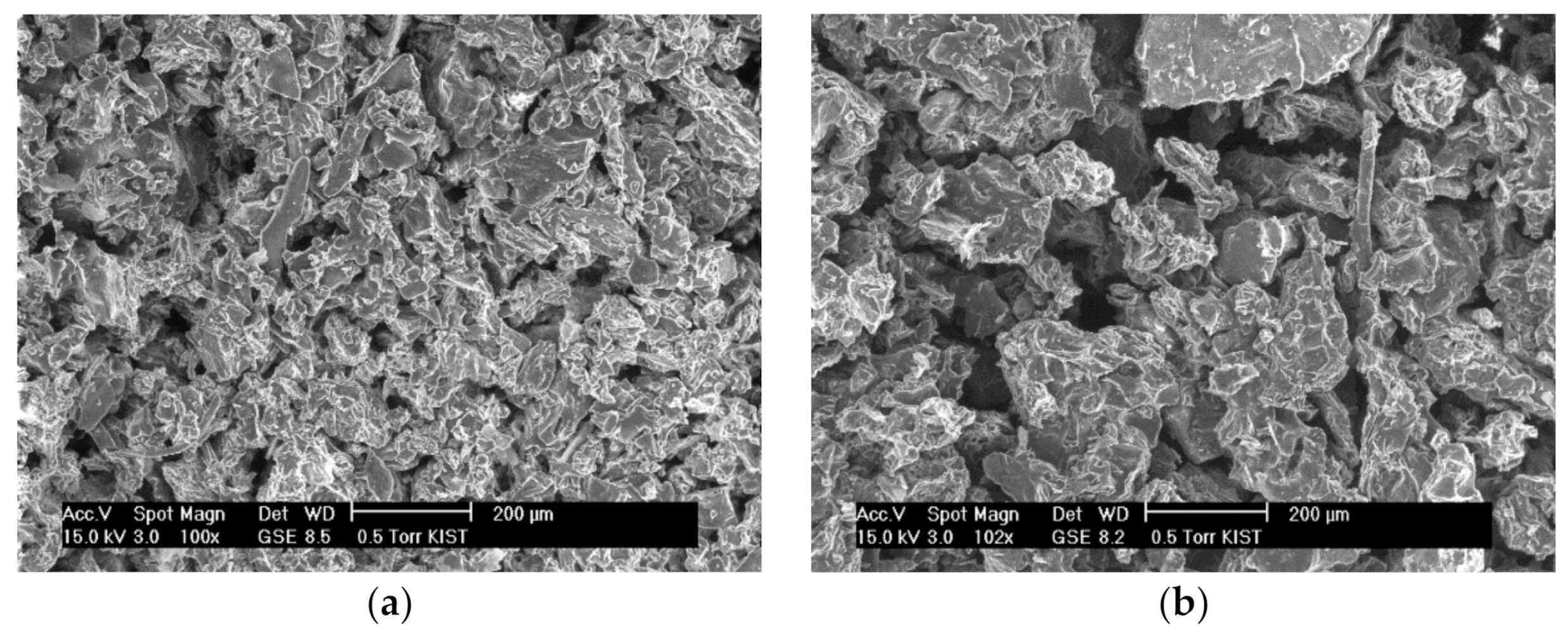
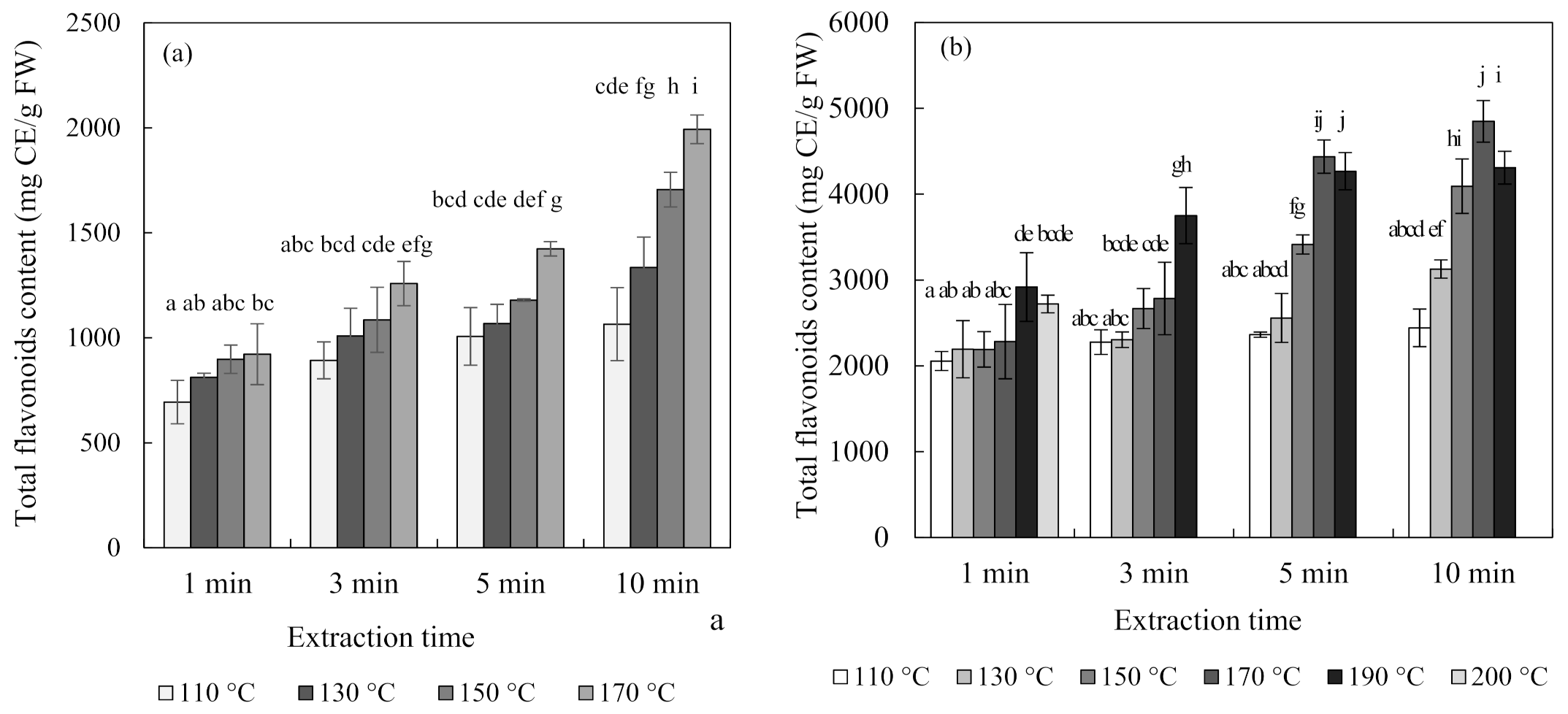
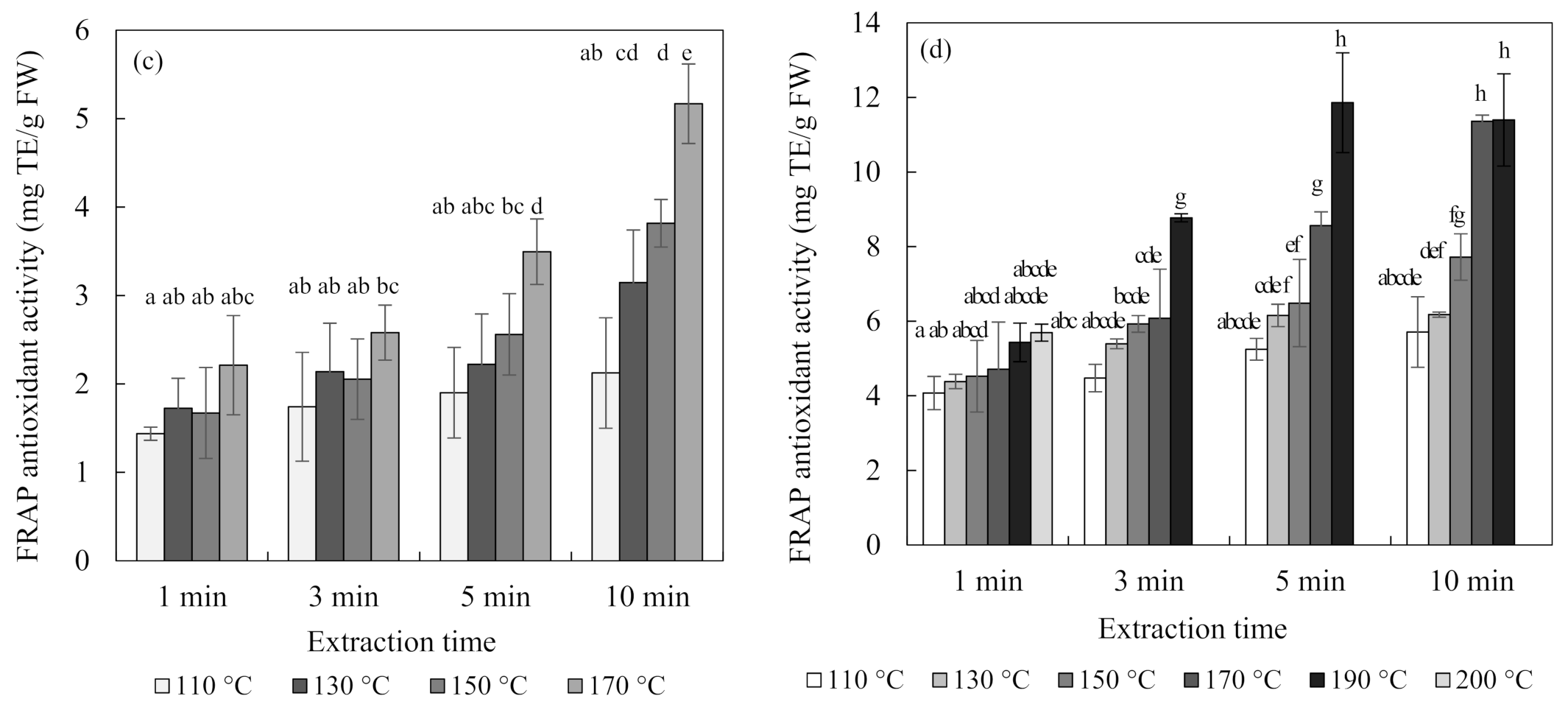
| Fruits | Peak | Retention Time (min) | [M]+ (m/z) | Anthocyanin | Chemical Structure | R1 | R2 | OR3 |
|---|---|---|---|---|---|---|---|---|
| Blueberry | 1 | 9.931 | 419.1817 | cyanidin-3-arabinoside | 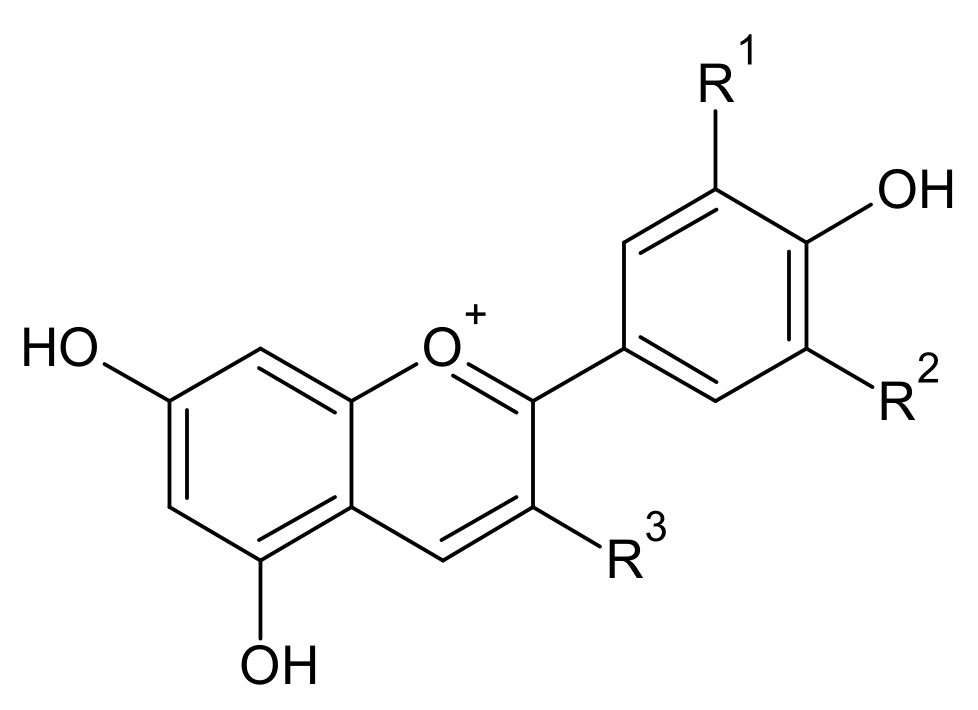 | H | OH | arabinose |
| 2 | 10.022 | 449.1723 | cyanidin-3-galactoside | H | OH | galactose | ||
| 3 | 10.333 | 449.177 | cyanidin-3-glucoside | H | OH | glucose | ||
| 4 | 10.881 | 465.1002 | delphinidin-3-galactoside | OH | OH | galactose | ||
| 5 | 11.287 | 465.1007 | delphinidin-3-glucoside | OH | OH | glucose | ||
| 6 | 11.903 | 463.2499 | peonidin-3-galactoside | H | OMe | galactose | ||
| 7 | 12.191 | 435.0865 | delphindin-3-arabinoside | OH | OH | arabinose | ||
| 8 | 13.556 | 449.1049 | petunidin-3-arabinoside | OH | OMe | arabinose | ||
| 9 | 15.126 | 493.0985 | malvidin-3-galactoside | OMe | OMe | galactose | ||
| 10 | 16.766 | 479.1156 | petunidin-3-galactoside | OH | OMe | galactose | ||
| 11 | 16.877 | 479.1251 | petunidin-3-glucoside | OH | OMe | glucose | ||
| 12 | 17.101 | 493.1353 | malvidin-3-glucoside | OMe | OMe | glucose | ||
| 13 | 20.697 | 463.2991 | malvidin-3-arabinoside | OMe | OMe | arabinose | ||
| Chokeberry | 1 | 0.918 | 287.110 | cyanidin | H | OH | ||
| 2 | 9.928 | 419.160 | cyanidin-3-arabinoside | H | OH | arabinose | ||
| 3 | 10.016 | 449.152 | cyanidin-3-galactoside | H | OH | galactose | ||
| 4 | 10.338 | 449.156 | cyanidin-3-glucoside | H | OH | glucose | ||
| 5 | 10.874 | 465.081 | delphinidin-3-galactoside | OH | OH | galactose | ||
| 6 | 11.281 | 465.080 | delphinidin-3-glucoside | OH | OH | glucose | ||
| 7 | 12.182 | 435.079 | delphindin-3-arabinoside | OH | OH | arabinose | ||
| 8 | 20.696 | 463.28 | malvidin-3-arabinoside | OMe | OMe | arabinose |
| Fruits | Anthocyanin | Extraction Method (mg/g FW) | ||
|---|---|---|---|---|
| Subcritical Water | Pressed Juice | Hot Water | ||
| Blueberry | Anthocyanin pigment | 0.47 ± 0.03 a | 0.12 ± 0.02 c | 0.37 ± 0.05 b |
| Malvidin-3-galactoside | 0.18 ± 0.02 a | 0.04 ± 0.00 c | 0.12 ± 0.01 b | |
| Chokeberry | Anthocyanin pigment | 0.66 ± 0.04 a | 0.08 ± 0.02 c | 0.49 ± 0.03 b |
| Cyanidin-3-galactoside | 1.34 ± 0.07 a | 0.14 ± 0.00 c | 0.77 ± 0.09 b | |
Publisher’s Note: MDPI stays neutral with regard to jurisdictional claims in published maps and institutional affiliations. |
© 2021 by the authors. Licensee MDPI, Basel, Switzerland. This article is an open access article distributed under the terms and conditions of the Creative Commons Attribution (CC BY) license (http://creativecommons.org/licenses/by/4.0/).
Share and Cite
Kang, H.-J.; Ko, M.-J.; Chung, M.-S. Anthocyanin Structure and pH Dependent Extraction Characteristics from Blueberries (Vaccinium corymbosum) and Chokeberries (Aronia melanocarpa) in Subcritical Water State. Foods 2021, 10, 527. https://doi.org/10.3390/foods10030527
Kang H-J, Ko M-J, Chung M-S. Anthocyanin Structure and pH Dependent Extraction Characteristics from Blueberries (Vaccinium corymbosum) and Chokeberries (Aronia melanocarpa) in Subcritical Water State. Foods. 2021; 10(3):527. https://doi.org/10.3390/foods10030527
Chicago/Turabian StyleKang, Hye-Ji, Min-Jung Ko, and Myong-Soo Chung. 2021. "Anthocyanin Structure and pH Dependent Extraction Characteristics from Blueberries (Vaccinium corymbosum) and Chokeberries (Aronia melanocarpa) in Subcritical Water State" Foods 10, no. 3: 527. https://doi.org/10.3390/foods10030527






